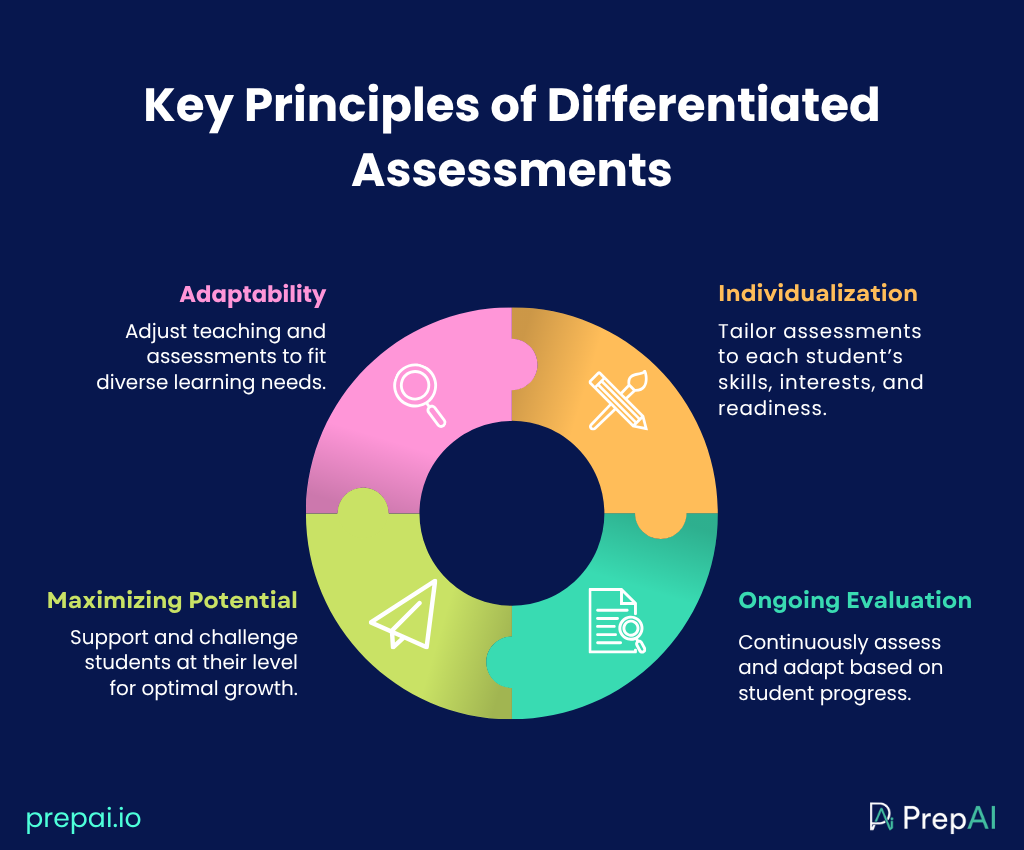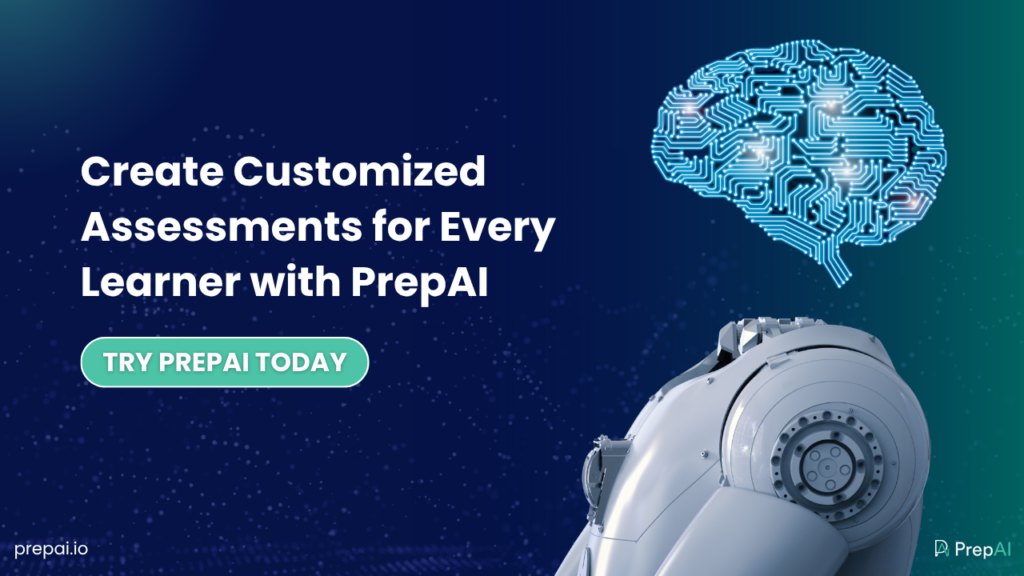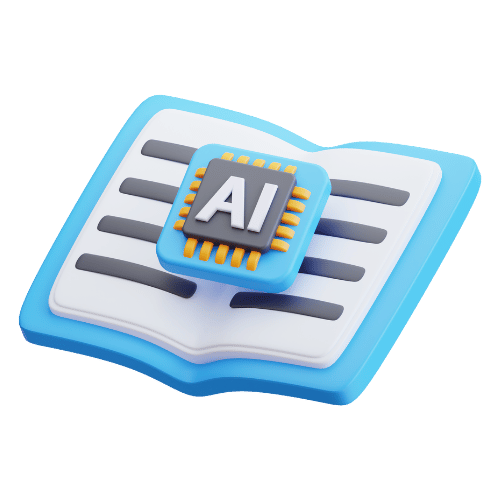Differentiated assessments refers to the process of involving teachers to consider different types of assessment strategies and methods in which students can demonstrate their understanding for different interests, learning needs, skills and abilities. Here, we will understand how creating differentiated assessments help students grow and learn.
As students apply their existing knowledge to find, create, and integrate new information, skills, and understanding, differentiated assessment can result in improved learning outcomes. It entails teachers taking into account a variety of evaluation options to fit each student’s needs, interests, skills, and past knowledge. Diversity in today’s vibrant classrooms extends well beyond background or culture. Each learner has a distinct learning style, speed, aptitude, and viewpoint. The complexity of today’s learners just cannot be adequately captured by using the same assessment for all. This is the role of differentiated assessments in classrooms, which is why AI in assessments can be accessed using tools like PrepAI and other platforms that are transforming the way teachers assess students’ comprehension.
Differentiated assessments are a component of differentiated education. It’s a more comprehensive teaching approach. This method offers a diverse approach to material, methodology, and learning environment, while acknowledging each student’s own learning preferences, interests, and skills. By incorporating diverse learning assessments like pre-assessments, formative assessments, and summative assessments in addition to typical quizzes and tests. Differentiation in assessments ensures that these evaluations serve as a guide and inform instruction rather than merely marking the end of a unit.
When educators focus on making differentiated assessments they need to understand the strength, challenges, and experiences of the different learners. This helps them modify their instructional methods, resources, and evaluations to better suit each student’s unique learning preferences. For instance, students that learn best visually or kinesthetically can benefit from the use of manipulatives, technology, or visual aides. Moreover the use of flexible assessment techniques allow diverse learners to be engaged and motivated by a range of instructional methods, which will ultimately increase literacy outcomes.
What are the Principles of Differentiated Assessments?
Adaptability: The fundamental principle of differentiated instruction is flexibility. It highlights the necessity of adapting instructional strategies, resources, and evaluations to meet the various learning requirements of students. Teachers must be prepared to modify their teaching methods and accommodate each student’s unique demand to learn and thrive in varied classrooms.
Individualization: Individualization highlights the significance of identifying and meeting the particular requirements and traits of every student. By creating assessments like functional assessments, competency based assessment, and more students’ unique learning profiles, interests, and readiness levels should all be taken into account. For advanced students, this can method can work as an extending learning opportunities, offering different assignments, and creating a learning environment where students feel valued, and supported.
Maximizing Learning Potential: The ultimate objective of customized education is to maximize the learning potential of the students. Using AI in creating differentiated assessments serves as the force for the other principles, guaranteeing that each student has the chance to realize their greatest potential in a stimulating and encouraging learning environment. In order to avoid boredom and frustration, differentiated assessments seek to challenge and support every student at their appropriate level.
Ongoing Assessments: Finding students’ strengths, shortcomings, and growth requires ongoing examination. When necessary, teachers modify their lessons and offer focused support using the results from AI generated assessments. A key component of successful differentiated training is ongoing assessment. It provides educators with the information they need to modify their methods and provide a classroom where each student can succeed. Continuous evaluation aids in determining the requirements of the students and making assessments accordingly.
How AI can help in Generating Differentiated Assessments?

Focusing on generating differentiated assessments helps in improving the learning outcome because the assessments will be aligned to the learning style of the students. It is quite challenging for teachers to generate distinctive assessments considering each student needs, skills, and abilities. With the integration of AI in education generating assessments according to the needs, skills, and abilities of the students becomes easy and effective. Teachers can use AI in assessments in creating differentiated assessments in a variety of ways:
Flexible Question Generation
For diverse learners tools like PrepAI allow teachers to generate flexible assessments from the uploaded documents. Educators can efficiently upload content in formats like text, PDFs, links, videos, audios, and more to craft questions for functional assessments, competency based assessments, etc. Moreover AI tools empower students and teachers to create, learn, and enhance their knowledge according to their requirements. The questions like MCQs, true/false, short answers, descriptive answers, HOTS can instantly allow students to focus on their challenge zones, strength areas, and individualized learning goals so that no learner is left behind.
Use of Bloom’s Taxonomy
It is important for students to learn, and acquire knowledge that helps them grow and develop. With bloom’s taxonomy facilitating differentiated assessment offers a framework for classifying learning objectives and evaluation techniques according to cognitive complexity. This makes it possible for teachers to create a variety of tests that meet the demands and learning levels of the students, guaranteeing that every student is given the right kind of challenge. It can also help in analyzing the abilities of the students on the levels including remembering, understanding, applying, analyzing, evaluating, and creating. Thus, teachers are interested in evaluating students’ ability to apply knowledge, make connections between ideas, and solve problems in real-world situations, not just what they can recall.
Personalized and Editable Content
The flexible assessments techniques can be drafted successfully using AI platforms like PrepAI. Teaching diverse learners is difficult and by enabling teachers to customize learning experiences and assessments to each student’s requirements, skills, and learning preferences, greatly improves their learning capacity, resulting in better development of the students. This method improves student outcomes by facilitating more precise identification of learning gaps, focused feedback, and the administration of suitable solutions. Moreover, using AI in assessments allows educators to completely alter, rephrase, or restructure any AI-generated question to suit their students’ learning styles, classroom dynamics, and subject-specific objectives. Thus, these tools let teachers maintain control by changing the tone to be more age-appropriate and aligning examples to local situations so that students can grab instantly.
Creating Inclusive Learning Environment
Inclusive learning is a new normal in the education system because when educators create a supporting environment for students they learn, grab, and feel valued. This proactive step makes learning easy and effective for students. Using AI tools in assessment creation enables educators to generate material that is adaptable to varied needs, cultural backgrounds, and cognitive levels of the students. AI also allows teachers to create bias-free assessments, making it easier to validate students’ identities and build a more empathetic, inclusive classroom for students where they can learn, grow, and understand dynamics according to their uniqueness, skills, and abilities.

Conclusion
Differentiated assessments are an effective way to help a variety of learners in the classroom. Teachers can establish more inclusive, interesting, and productive learning environments by combining a range of evaluation techniques and customizing instruction to fit each student’s requirements. With the extensive use of AI tools like PrepAI, can help educators to address students’ unique needs in a better way. These tools can generate assessments that are unique and tailored according to the skills and abilities of the students that makes learning easy, efficient, and building an empathetic space for them.



